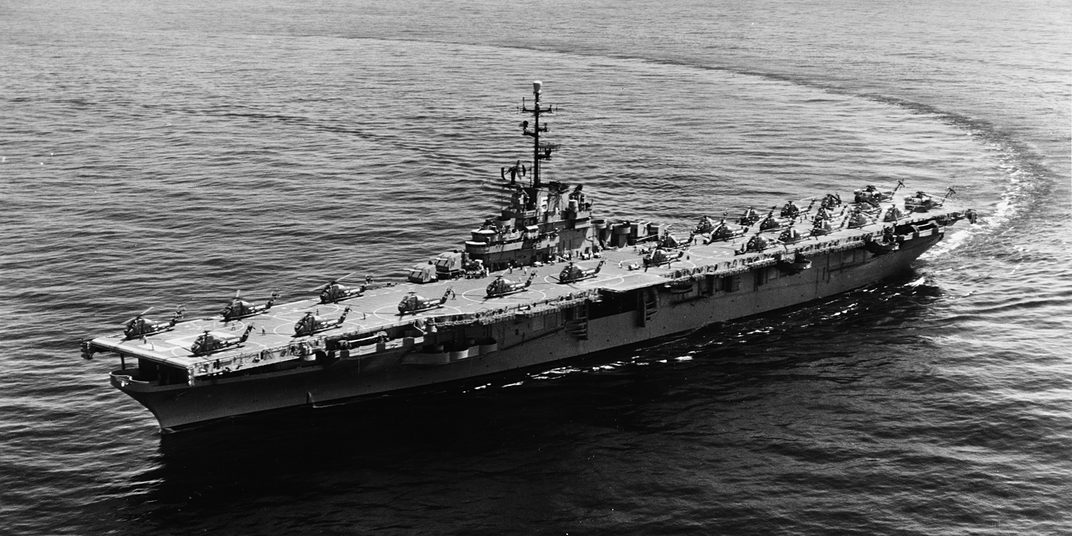NATIONAL MUSEUM OF THE AMERICAN INDIAN
A Tradition of Service: Navy Veteran S. Joe Crittenden, Deputy Principal Chief of the Cherokee Nation
S. Joe Crittenden, deputy principal chief of the Cherokee Nation, talks briefly about his service in the U.S. Navy in the mid-1960s and what it has meant to his life. Five years ago, Deputy Chief Crittenden testified in support of the Act of Congress creating the National Native American Veterans Memorial. Now he is a member of the advisory committee seeing the memorial through to its dedication in 2020.
/https://tf-cmsv2-smithsonianmag-media.s3.amazonaws.com/blogging/featured/Deputy_Chief_Crittenden_cabin.png)
On November 11, 2020, the National Museum of the American Indian will honor Native American servicemen and women and their families by dedicating the National Native American Veterans Memorial on the National Mall in Washington, D.C. The memorial, chartered by the U.S. Congress and being built with private funds, represents the work of many people over several years. From 2015 until the summer of 2017, the museum and the memorial advisory committee conducted 35 community consultations. These meetings brought together tribal leaders, Native veterans, and community members from across the nation, and resulted in a shared vision and set of design principles. In 2018, after an open competition, a distinguished jury selected the design concept submitted by artist and Marine Corps Vietnam veteran Harvey Pratt (Cheyenne and Arapaho Tribes).
Here, S. Joe Crittenden, deputy principal chief of the Cherokee Nation and a member of the memorial advisory committee, talks briefly about his experiences as a Native American in the U.S. military.
Thank you for serving on the National Native American Veterans Memorial advisory committee. Please introduce yourself.
My name is Stanley Joe Crittenden. I’m from a small community near Stilwell, Oklahoma, called Peavine. Most people know me as Joe. Early in my military time, I was often called Critter by some in my company. It was probably easier to remember and pronounce than Crittenden.
Is the warrior culture strong in the Cherokee Nation?
Very much so.
Did any of your family members also serve?
Yes. My great uncle served in the Army in World War I. My father served in the Army in World War II. His brother served in the Korean War. My younger brother and I both joined the Navy and are both Vietnam veterans. My youngest brother joined the Army and served in Germany.
Why did you choose to serve in the armed forces?
In 1964 the draft was ongoing, and I felt that I would be called up soon. Me and a friend talked about joining the service quite often, and so one day we contacted a recruiter and signed up.
Did your Native background play any part in your decision to join the military?
I didn’t realize it at the time I enlisted. Knowing what I know now about Native Americans’ serving at higher percentages than others, it probably did.
Why did you enter your specific branch of the military?
My father told me that if I served this country during wartime, enlist either in the Air Force or Navy. I chose the Navy.
What years did you serve, and where did you serve?
I served from 1964 until 1967. I went to boot camp, in San Diego, California, followed by radio school, also in San Diego. Then I spent 18 months on the island of Guam. Next, I was sent to the USS Princeton (LPH-5), an amphibious assault ship, docked in Long Beach, California. The Princeton made one trip to the Vietnam War zone while I was aboard.
What was the highest rank you received?
E-4.
Were there other Natives who served with you? Were you treated differently in the service because you are Native American?
Yes, I served with other Native Americans. I didn’t experience being treated differently.

Is there a story or incident that sticks out the most in your mind about your service?
I remember the first time I heard, “Man your battle stations.” We were on station just off the coast of Vietnam. We had no idea what was happening, and we were quite concerned. Later we learned that we had been fired upon, but the ship was not hit.
Where were you when your service ended?
My ship was in dry dock in Long Beach, California.
Did the Cherokee Nation or your Native community do anything special for you upon your return home when your service ended?
No.
Are you a member of any veterans groups?
Not currently.
Would you recommend joining the service to your family members or other Native Americans?
Most certainly. I mention the benefits of serving in the military to young people often.
What do you think of the decision to create a National Native American Veterans Memorial?
I am thrilled to know that the memorial is going to be a reality. I greatly appreciate Congressman Markwayne Mullin, who is also a citizen of the Cherokee Nation, for sponsoring H. R. 2319, the Native American Veterans’ Memorial Amendments Act. I testified in support of that act at a hearing of the Subcommittee on Indian and Alaskan Native Affairs.
Is there anything you’d like to add?
In 1964, I was two years out of high school, working for low pay and not much else. Then I joined the Navy. The training and experiences I received helped prepare me for a brighter future. I was able to use the G.I. Bill to attend college and finished my bachelor’s degree in three years. Good jobs followed, and the opportunity to do public service.
Thank you for giving the museum this interview, and thank you for helping build the National Native American Veterans Memorial.
Thank you.
■ ■ ■
For more information about the memorial, visit AmericanIndian.si.edu/NNAVM.
